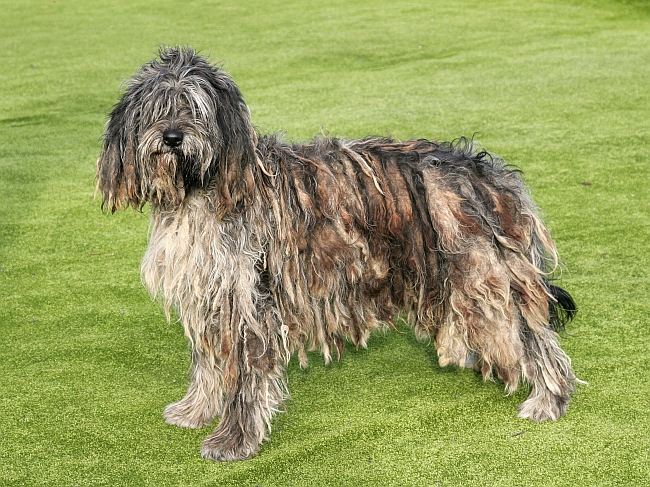Not everybody grows up dreaming that they will own a living mop. But when you see a canine with a corded coat it is difficult not to fall in love with their tangled exuberance. Here are some of the rare breeds whose fur coats are pre-disposed to having a dread-like consistency:
Naturally born with crimped hair, the below dog breeds can be brushed through from an early age until their coats are thick and fluffy. However some dog owners choose to cord their pets’ fur for competitions and breed shows, or simply for stylistic choices. Usually the fur will naturally cord up, or wrap around like dread locks, while some breeds need cleaning, coaxing and combing into place. When the cords grow long, they need to be carefully maintained in order to avoid collecting dust and grime. The moppy hair can easily collect twigs, leaves, dirt and dust anytime the pup goes romping outside or exploring a new place. Because cleaning dense dog coats such as these can be time consuming, some dog owners throw a protective “shield” poncho or dog jacket over the coat to keep their pups clean and tidy.

Puli: This loquacious breed, also known as the “Hungarian Water Dog,” is perhaps the most recognizable of the corded dogs. They are born with a double layer of crimped hair which can be vary puffy if combed out. Once the dog is about a year old, their adult coat can be twisted into cords by hand. Their coats take about 4-5 years to grow fully, and can come in black, white, gray, and wheat colored. Pulis are a small/medium sized breed, usually weighing 25-35 pounds and standing about a foot and a half tall.

Bergamasco: These Italian sheepdogs are both a functional a herding dog breed as they would be considered fashionable. Their coats cord in a less rounded shape, and lay flatly against their bodies. The thick coats proved to be suitable armor for these brave sheep-herders in icy winter weather, and since the thin cords do not weave tightly down to the skin, they also give the surface room to breathe, allowing the dog to stay cool in summertime. The dense cords were also useful to the dogs as a protective shield when wolves or wild dogs would attack the Bergamascos while defending their flock.

Komondor: These striking Hungarian dogs are much larger than the Puli. They stand over 2 ft tall, and can weigh between 80-100 lbs. Also sheepdogs, the Komodors have thinly corded, white coats that are dense and double-layered, giving them a wooly look similar to the sheep they guard. Historically the appearance of their coats worked as a camouflage for when predators would descend upon the sheep thinking that there was neither a dog nor a shepherd to protect them. Komondors can be aggressive to unfamiliar people, dogs and strange animals, but are also known as loyal and protective pets.

Spanish Water Dogs: The Spanish Water Dog has a single-layer coat which is much lighter than other cord-coated breeds. The narrow cords can come in black, brown, beige, and white, and may have varying textures depending on how the owner has chosen to let the dog wear the fur. They require specific care for the quality of their coats, including a balanced diet, careful trimming, cording, natural air-drying, and cleaning. Owning a corded dog may be a lot of work, but the payoff is rewarding!
Note: Both Poodles and corded Havanese dogs can also have their crimpy hair twisted into a corded texture.

